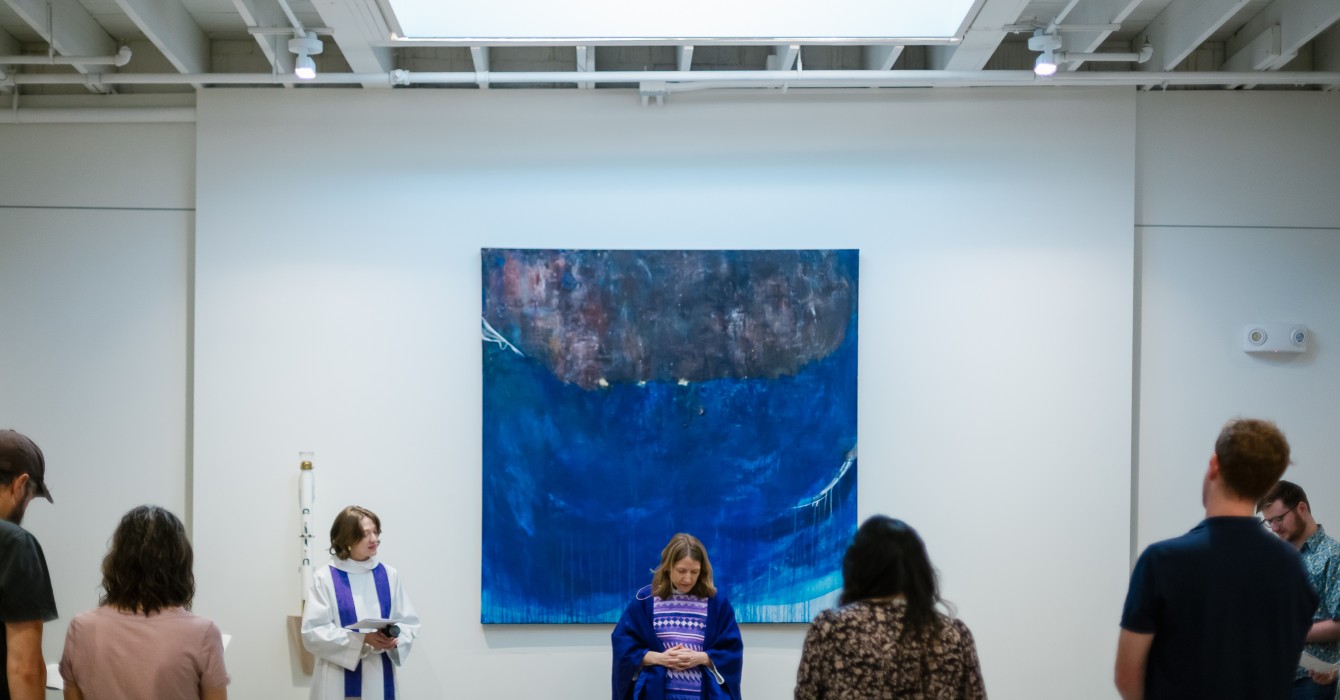“Innovate violently”: That’s the advice the great Pablo Picasso heard from and shared with his fellow groundbreaking artists in France in the early 20th century. The phrase also highlights “Picasso and the Allure of Language,” an exhibit at Duke’s Nasher Museum of Art through Jan. 3. Who could argue Picasso and company did anything but innovate violently? He and Georges Braques and others entirely reshaped how artists create -- and how the rest of us contemplate -- art. Why shouldn’t a viewer be able to look at a figure from multiple vantages at the same time? Why can’t text be part of a painting? Why shouldn’t a bicycle handle be the head of a bull? Countless more innovations led Picasso into Cubism and helped him give inspiration to the surrealism pioneered by his fellow Spaniard, Salvador Dali.
“Innovate violently” contrasts nicely with “traditioned innovation,” a practice in which the church does a new thing, but always by reaching back into the treasure trove of our past. This difference came clear to me thinking back on an interview with Andy Crouch of “Christianity Today.” I asked him what he would do if he got to be a seminary president all of a sudden. “You can break everything,” I said. “How would you start over?” He paused and squirmed a little. “Well, I wouldn’t want to break everything. I might not want to break anything. A lot of how the church trains seminarians is something we should treasure.” Crouch wouldn’t innovate violently. He would do so cautiously if anything, especially at first.
The concept of traditioned innovation holds that entrepreneurial advance in the church for a new day is never a start from scratch. We need always to be innovating boldly -- and truth be told the church is entirely too reticent to change too much of the time. But when we change we don’t do so just for change’s sake, or to attract more people, or from scratch. Instead, we always reach back into the depths of Christian tradition to recover something we’d neglected there and reframe it for a new day. For example, look at the various “new” movements, like the “new monastics” and the “new friars.” The former move back into abandoned places of empire and set up outposts of the kingdom of God in intentional community. They are like ancient monks, only they’re evangelicals, and so marry and have children, and often pursue secular careers outside the monastery (or, that is, community). The new friars are like their medieval forebears Clare and Frances in that they vow poverty, chastity and obedience (filtered through their evangelical commitments), but they are not cloistered in one spot. They go around preaching to anyone who’ll hear. As these evangelicals do new things they also do old things, and their genius lies in holding in tension both the old and the new. They are not practicing “violent innovation;” if anything traditioned innovation is peaceful innovation.
But what interested me about the Picasso exhibit was how Picasso himself practiced something much like traditioned innovation. He could no more break everything than Andy Crouch could. All he had to work with were the same things artists had been working with forever: paint, canvas, clay, pencil and paper, words, models and so on. Of course he did spectacularly new things with those old materials, as any cursory glance at Cubism will attest. But even so he reached back into the deep history of art to do his new thing. He began with learning about the art of African masks -- long present in his native Spain but disdained as “barbaric art” at best. Those cubist images came from somewhere: namely, from generations of nameless African artists and the deep artistic and religious meaning they gave those masks. Picasso’s innovation was reaching back not just into European but also African history -- but it was still traditioned innovation of a sort.
Picasso also went through a classical stage (among many other stages) about mid-career. In this phase, Greek statuary and stories came to occupy his mind, and he came to integrate classical forms into his startling new work. The exhibit includes a series of illustrations that make up the only commissioned work for a book Picasso ever did in America. He drew images for Aristophanes’ Lysistrata, the famous comedy in which the women of Greece and Sparta ban together to end the Pelopennesian War by refusing sex to their warrior husbands. The images are spectacular -- and they are based on a play that’s two and a half millennia old.
The exhibit also includes manuscripts that a friend asked Picasso to illustrate. He chose to do so in a way inspired by medieval manuscripts. Rather than draw images, Picasso illumined the pages with abstract designs evoking medieval scribes, bringing a medieval tradition into the 20th century. Even Picasso’s most daring innovations are not necessarily violent, as one poem he wrote makes clear. He wrote it as a tribute to El Greco, the Greek Baroque painter who spent his career in Spain, lyrically praising his forerunner in innovation on the Iberian peninsula. One look at El Greco’s long, haunting, explicitly unrealistic images confirms that Picasso did not start from scratch. Even this “violent innovator” stood on the shoulders of giants, as he knew full well.
This is not to downplay one man’s genius, far from it. It may just mean a redefinition of genius. A great pioneer, in art or leadership or elsewhere, is one who takes existing materials and puts them together in a new way, as Picasso did so often. In short, genius is not about innovation that is violent, but traditioned.
Jason Byassee is an executive director of Leadership Education at Duke Divinity.








